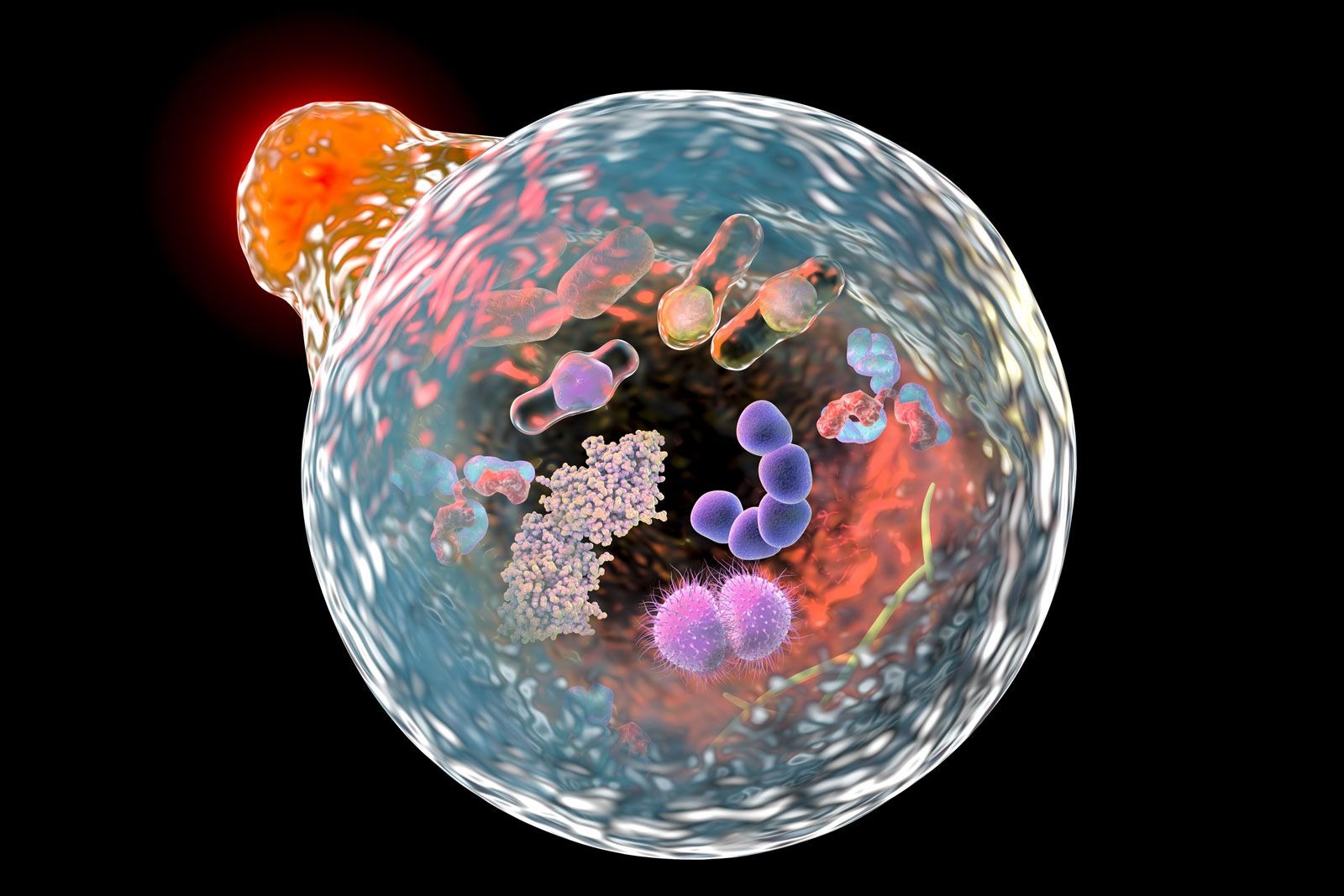

Featured
What Is Fitness In Biology
Modified: August 21, 2023
Discover the concept of fitness in biology and explore its significance in evolution. Learn about the various factors that contribute to an organism's fitness. Featured in-depth information and insights.
Introduction
Fitness is a fundamental concept in biology that encompasses an organism’s ability to survive, reproduce, and pass on its genes to the next generation. It is a measure of an organism’s overall health, functionality, and success in its environment. In the world of biology, fitness goes beyond the conventional idea of physical strength and encompasses a range of attributes that contribute to an organism’s survival and reproductive success.
The concept of fitness in biology is closely linked to the theory of evolution by natural selection. According to this theory, organisms with genetic traits that enhance their fitness are more likely to survive and reproduce, passing on these advantageous traits to future generations. As a result, populations evolve over time, becoming better adapted to their environments.
Fitness is a multifaceted concept that is influenced by various factors, including genetic makeup, environmental conditions, and individual behaviors. It is not solely determined by physical attributes but also extends to physiological, behavioral, and reproductive aspects.
In this article, we will delve deeper into the concept of fitness in biology, exploring its definition, significance, factors affecting it, methods of measurement, its genetic basis, and its role in the process of evolution. Understanding fitness is crucial for comprehending the complex interactions between organisms and their environment, as well as the mechanisms driving the diversity of life on Earth.
Definition of Fitness
In biology, fitness refers to an organism’s ability to survive, reproduce, and pass on its genetic material to subsequent generations. It is a measure of an organism’s overall reproductive success and adaptation to its environment. Fitness can be seen as a quantitative representation of an organism’s evolutionary advantage, indicating how well-suited it is to its ecological niche.
Fitness is not solely determined by physical strength or health. It encompasses a range of attributes that contribute to an organism’s survival and reproductive success. These attributes can include traits such as speed, agility, camouflage, resistance to disease, efficient metabolism, and effective reproduction strategies.
An organism’s fitness is influenced by a combination of genetic factors and environmental conditions. Genetic traits that enhance an organism’s fitness increase its chances of survival and successful reproduction. These advantageous traits can be inherited from parents or result from spontaneous mutations. Environmental factors, such as the availability of resources, predation pressure, and competition, also play a significant role in determining an organism’s fitness.
It is important to note that fitness is relative and context-dependent. An organism’s fitness is evaluated within the specific context of its environment and the challenges it faces. Traits that may confer fitness advantages in one environment may be disadvantageous in another. For example, bright colors can be advantageous for attracting mates in certain environments but may make an organism more visible to predators in others.
The concept of fitness can be divided into two main types: absolute fitness and relative fitness. Absolute fitness measures the overall reproductive success of an organism, including its ability to survive and produce viable offspring. Relative fitness compares the reproductive success of different individuals or genotypes within a population, providing a measure of how well individuals with specific traits contribute to the gene pool of the next generation.
In summary, fitness in biology refers to an organism’s ability to survive, reproduce, and pass on its genetic material. It encompasses a wide range of attributes and is influenced by both genetic and environmental factors. By understanding the concept of fitness, scientists can gain insights into the processes driving evolution and the adaptations that allow organisms to thrive in their specific ecological niches.
Importance of Fitness in Biology
Fitness is of paramount importance in biology as it is directly linked to an organism’s survival, reproductive success, and adaptation to its environment. It plays a crucial role in driving the processes of natural selection and evolution.
First and foremost, fitness is a measure of an organism’s ability to survive. Individuals with higher fitness are better equipped to withstand environmental pressures, such as predation, disease, and competition for resources. Through natural selection, organisms with advantageous traits that enhance their fitness have a higher chance of survival, allowing them to pass on these traits to future generations.
Reproductive success is another vital aspect of fitness. Organisms that can successfully reproduce and produce offspring that can survive and reproduce themselves contribute more to the gene pool of the next generation. Traits that increase reproductive success, such as fertility, mating success, and effective parenting strategies, are indicators of high fitness. Over time, these successful traits become more prevalent in a population, leading to the evolution of species.
Fitness is also essential for adaptation to specific environmental conditions. As the environment changes, individuals with traits that increase their fitness in the new conditions have a higher likelihood of survival and reproduction. This allows for the gradual accumulation of adaptive traits within a population, leading to the development of new species or the refinement of existing ones.
Understanding fitness is crucial for studying the dynamics of populations and communities. It helps scientists analyze the interactions between organisms and their environment, including competition, predation, and cooperation. By examining the fitness of different individuals and the traits that contribute to their reproductive success, researchers gain insights into the mechanisms driving the diversity and complexity of life on Earth.
Fitness also has practical applications in fields such as conservation biology and medicine. In conservation biology, measuring the fitness of endangered species can help prioritize conservation efforts and guide breeding programs. In medicine, understanding the genetic basis of fitness can lead to new insights into the causes of diseases and potential therapeutic interventions.
In summary, fitness is of utmost importance in biology. It determines an organism’s ability to survive, reproduce, and adapt to its environment. It is a key factor in the processes of natural selection and evolution and provides valuable insights into the dynamics of populations and communities. By studying fitness, scientists can unravel the intricate mechanisms that shape and sustain life on our planet.
Factors Affecting Fitness
Fitness in biology is influenced by a multitude of factors, including genetic, environmental, and behavioral aspects. These factors interact and shape an organism’s ability to survive, reproduce, and pass on its genes to the next generation.
Genetic factors play a crucial role in determining an organism’s fitness. Genetic variations within a population give rise to different traits that can confer advantages or disadvantages in specific environments. Some genetic traits may enhance an organism’s ability to obtain resources, avoid predation, or resist diseases, increasing its fitness. These advantageous traits can be inherited from parents or arise from new mutations.
Environmental conditions also have a significant impact on an organism’s fitness. Factors such as resource availability, temperature, humidity, predation pressure, and competition can greatly influence an organism’s ability to survive and reproduce. For example, in an environment with limited food resources, individuals with efficient foraging abilities may have higher fitness by obtaining more nutrients and energy for growth and reproduction.
Behavioral characteristics can also affect an organism’s fitness. Behaviors related to foraging, predator avoidance, mate choice, and parental care can all influence an individual’s ability to survive and reproduce. For example, the ability to detect and avoid predators, to find and secure mates, or to provide parental care to offspring can significantly enhance an individual’s fitness.
Additionally, interactions between genes and the environment, known as gene-environment interactions, can significantly impact an organism’s fitness. Certain genetic traits may be advantageous in one environment but detrimental in another. The same genetic trait can have varying effects depending on the environmental conditions. For instance, a gene that provides resistance to a particular disease may be advantageous in an environment with a high disease prevalence but may offer little advantage in a disease-free environment.
It is important to note that the factors affecting fitness can vary between species and even within populations of the same species. Different organisms have evolved different strategies to optimize their fitness in their specific ecological context. Moreover, the importance of certain factors may also change over time as environmental conditions fluctuate.
To summarize, multiple factors influence the fitness of an organism, including genetic traits, environmental conditions, and behavioral characteristics. Genetic variations, environmental factors, and gene-environment interactions all play significant roles in shaping an organism’s ability to survive and reproduce in its specific ecological niche. By understanding these factors, scientists can gain insights into the diverse strategies and adaptations that have evolved across different species to optimize their reproductive success and overall fitness.
Measurement of Fitness
The measurement of fitness in biology can be a complex task as it involves quantifying an organism’s reproductive success and its ability to survive in its environment. Various methods and indicators are used to evaluate fitness, each tailored to the specific characteristics of the organism being studied.
One common approach to measuring fitness is through reproductive output. This involves assessing the number of offspring an organism produces and their subsequent survival to reproductive age. By comparing the reproductive success of different individuals or groups within a population, researchers can gain insights into the relative fitness of different traits or genotypes.
Another indicator of fitness is survival rate. This involves monitoring and recording the lifespan and mortality rates of individuals in a population. Individuals that live longer and have lower mortality rates are considered to have higher fitness, as they have a greater opportunity to reproduce and pass on their genes.
Physiological measures can also provide insights into an organism’s fitness. For example, measuring factors such as metabolism efficiency, immune system function, and reproductive hormone levels can give indications of an organism’s health and ability to allocate resources effectively towards survival and reproduction.
Observing and quantifying behaviors related to foraging, mating, and parental care can also provide insights into an organism’s fitness. Certain behaviors may be linked to increased survival or reproductive success, such as efficient foraging strategies, effective courtship displays, or attentive parenting. Observation and recording of these behaviors can help assess an individual’s overall fitness.
In some cases, genetic markers and molecular techniques can be used to indirectly measure fitness. By examining genetic diversity within a population and tracking the frequency of specific alleles associated with advantageous traits, researchers can infer the relative fitness of different individuals or groups.
It is important to note that measuring fitness is often context-dependent and may vary across different environments or stages of an organism’s life cycle. Fitness can also be influenced by other factors such as competition, predation, and disease prevalence. Therefore, a comprehensive understanding of an organism’s fitness requires considering multiple indicators and evaluating them in the appropriate ecological context.
In summary, the measurement of fitness in biology involves assessing reproductive success, survival rate, physiological measures, behavioral observations, and genetic markers. These methods help researchers understand the reproductive and survival abilities of organisms and how they contribute to the overall fitness of individuals or populations. By studying fitness, scientists can gain insights into the selective forces driving evolution and the adaptations that enable organisms to thrive in their respective environments.
Adaptation and Fitness
Adaptation and fitness are closely intertwined concepts in biology. Adaptation refers to the process by which organisms evolve traits that enhance their survival and reproductive success in a particular environment. Fitness, on the other hand, measures an individual’s ability to survive, reproduce, and pass on its genes. Adaptation drives changes in fitness by favoring traits that confer an advantage in a specific ecological context.
Adaptation occurs through natural selection, which is the differential survival and reproduction of individuals with certain traits. Organisms that possess traits that increase their fitness have a higher chance of surviving and passing on these advantageous traits to future generations. Over time, this leads to the accumulation of adaptive traits in the population, ultimately resulting in a better fit between the organism and its environment.
Adaptive traits vary depending on the challenges and opportunities presented by the environment. For example, camouflage can be an adaptive trait that increases an organism’s chances of survival by allowing it to blend into its surroundings and avoid predation. Similarly, the ability to efficiently extract and utilize limited resources, such as a specialized beak shape in birds for specific types of food, can enhance an organism’s fitness by enabling it to obtain necessary nutrients.
It is important to note that adaptation is not a conscious process but rather results from the accumulation of advantageous variations through natural selection. Mutations, genetic recombination, and gene flow contribute to genetic variation within populations, which serves as the basis for adaptation. Traits that increase fitness are selectively favored, enabling organisms with these traits to outcompete those with less advantageous characteristics.
Moreover, adaptation is not a one-time event but an ongoing process. Environments change, and organisms must adapt to new conditions to ensure their continued fitness. This continual adaptation to changing circumstances contributes to the diversity and complexity of life on Earth.
Furthermore, adaptation can also have trade-offs. While certain traits may enhance fitness in one aspect, they may come at a cost in other aspects. For example, larger body size in animals may confer advantages in terms of resource acquisition and predator deterrence but may also require increased energy expenditure and make them more susceptible to certain diseases or predation.
In summary, adaptation and fitness are interconnected concepts in biology. Adaptation occurs through natural selection and results in the accumulation of advantageous traits, ultimately leading to increased fitness. Organisms evolve traits that enable them to better survive and reproduce in their specific environments. However, adaptation is an ongoing process as environments change, and organisms must continually adapt to ensure their fitness. Understanding adaptation and its relationship with fitness is central to comprehending the diversity and functioning of living organisms.
Types of Fitness
Fitness in biology encompasses different dimensions and can be classified into various types that capture different aspects of an organism’s survival and reproductive success. These types of fitness provide a more nuanced understanding of the selective pressures and adaptations in different ecological contexts.
One common classification is absolute fitness versus relative fitness. Absolute fitness measures an individual’s overall reproductive success, including its ability to survive to reproductive age and produce viable offspring. It is a measure of an organism’s overall genetic contribution to the next generation. Relative fitness, on the other hand, compares the reproductive success of different individuals or genotypes within a population. It provides a measure of how well individuals with specific traits contribute to the gene pool of the next generation, taking into account the reproductive success of others.
Another type of fitness is reproductive fitness. This focuses specifically on an organism’s ability to reproduce and produce viable offspring. It measures the number of offspring an individual produces and their subsequent survival to reproductive age. Reproductive fitness is important for understanding how different traits and behaviors contribute to an individual’s reproductive success and impact the gene pool of a population.
Survival fitness, also known as viability fitness, evaluates an organism’s ability to survive and avoid mortality. It measures the likelihood of an individual reaching reproductive age and contributing to the next generation. Survival fitness accounts for the selective pressures and challenges posed by the environment, including predation, disease, and competition for resources.
Behavioral fitness is a type of fitness that focuses on the impact of an organism’s behavior on its survival and reproductive success. It encompasses behaviors such as foraging, mate choice, and parental care, which can influence an individual’s ability to obtain resources, secure mates, and successfully rear offspring. Behavioral fitness is essential for understanding how behaviors evolve and contribute to an organism’s overall fitness.
Inclusive fitness is a concept developed by biologist W.D. Hamilton and relates to an organism’s ability to pass on its genetic material not only through its own direct reproduction but also through helping relatives survive and reproduce. Inclusive fitness takes into account the genetic relatedness between individuals and the benefits gained by supporting the reproductive success of relatives.
It is important to note that these types of fitness are not mutually exclusive and can intersect in complex ways. They provide complementary perspectives on the different components that contribute to an organism’s overall fitness.
In summary, the concept of fitness can be divided into various types that capture different aspects of an organism’s survival and reproductive success. Absolute fitness and relative fitness measure the overall and comparative reproductive success of individuals. Reproductive fitness focuses on an organism’s ability to reproduce and produce viable offspring. Survival fitness assesses an individual’s ability to survive and avoid mortality. Behavioral fitness examines the impact of behavior on survival and reproductive success. Lastly, inclusive fitness considers the genetic contribution made through direct reproduction as well as helping relatives survive and reproduce. These types of fitness provide a comprehensive understanding of the selective pressures and adaptations in different ecological contexts.
Genetic Basis of Fitness
The genetic basis of fitness refers to the role of genetic variations and traits in determining an organism’s ability to survive, reproduce, and pass on its genes to the next generation. Genetic factors play a fundamental role in shaping an organism’s fitness, as they determine the traits that can confer advantages or disadvantages in a specific environment.
Genetic variations within a population give rise to different phenotypic traits. These traits can be inherited from parents or arise from spontaneous mutations. Some genetic variations can enhance an organism’s fitness by providing advantages such as increased resistance to diseases, improved foraging abilities, or enhanced reproductive success. These advantageous traits increase an individual’s chances of surviving and passing on its genes, leading to their accumulation in the population over time.
The genetic basis of fitness is influenced by natural selection, which acts upon genetic variations in order to maximize reproductive success. Under natural selection, individuals with genetic traits that increase their fitness have a higher chance of survival and reproductive success. These advantageous traits become more prevalent in subsequent generations as they are passed on to offspring.
Genes control the development and functioning of traits, and variations in these genes contribute to variation in fitness. For example, genes involved in metabolism can influence an organism”s ability to efficiently extract and use nutrients, affecting its growth and reproductive success. Likewise, genes involved in reproductive behaviors and strategies can determine an organism”s success in attracting mates and producing viable offspring.
In some cases, genes that increase fitness can be subject to trade-offs. Certain traits that enhance fitness in one aspect may have negative consequences in other areas. For example, genes that confer resistance to a specific disease may increase an organism’s fitness in disease-prone environments but might have detrimental effects on other aspects of its health or reproductive success.
The genetic basis of fitness is also influenced by genetic drift and gene flow. Genetic drift refers to the random changes in genetic variation that occur due to chance events within a population. Gene flow, on the other hand, involves the movement of genetic material between different populations as individuals migrate and breed with each other. These processes can introduce new genetic variations or alter the frequency of existing ones, impacting the overall genetic basis of fitness within a population.
Understanding the genetic basis of fitness is crucial in various fields, including evolutionary biology, conservation biology, and medical research. It provides insights into the processes driving genetic adaptations, the diversity of life on Earth, and the genetic risks associated with certain diseases. By studying the genetic underpinnings of fitness, scientists can gain a deeper understanding of how organisms adapt to their environment and how populations evolve over time.
In summary, the genetic basis of fitness refers to the role of genetic variations and traits in determining an organism’s ability to survive, reproduce, and pass on its genes. Genetic variations give rise to different phenotypic traits, some of which enhance an organism’s fitness. Natural selection acts upon these genetic variations, promoting advantageous traits and increasing their prevalence in subsequent generations. The genetic basis of fitness is influenced by genetic drift, gene flow, and trade-offs associated with certain traits. Understanding the genetic basis of fitness is crucial for unraveling the mechanisms underlying evolutionary processes and for applications in various fields.
Evolution and Fitness
Fitness is closely intertwined with the process of evolution, as it plays a central role in driving the changes that occur in populations over time. Through the mechanism of natural selection, fitness shapes the genetic makeup of populations, leading to the adaptation and diversification of species.
Natural selection acts upon the variations in fitness among individuals within a population. Individuals with traits that increase their fitness have a higher chance of surviving, reproducing, and passing on their advantageous traits to the next generation. As a result, these traits become more prevalent over time, leading to the accumulation of adaptive traits in a population.
Evolution by natural selection occurs when the fitness advantages of certain traits lead to differential reproductive success. Traits that enhance an organism’s ability to survive, find resources, evade predators, and reproduce become more common within a population as individuals with these traits have a higher likelihood of passing them on to their offspring. Over successive generations, this leads to the emergence of populations that are better adapted to their specific environments.
Fitness is the driving force behind the shaping of species and the development of complex adaptations. It enables organisms to thrive and succeed in their particular ecological niches. As environments change over time, individuals with traits that enhance their fitness in the new conditions have a greater chance of survival and reproduction. This drives the process of natural selection, favoring the evolution of new traits that improve fitness in the changing environment.
Evolution is an ongoing process that occurs over long periods of time. It involves the continuous interplay between genetic variations, fitness advantages, and environmental factors. Fitness represents the link between an organism’s genetic makeup and its ability to navigate and succeed in its environment.
The concept of fitness is essential for understanding the patterns of biodiversity and the interconnectedness of species in ecosystems. Through evolutionary processes, organisms adapt to their environment, resulting in the diversification of species and the formation of complex ecological relationships. Fitness also shapes the dynamics of populations, as individuals with higher fitness contribute more genetic material to subsequent generations, influencing the genetic composition of the population as a whole.
By studying the interplay between evolution and fitness, scientists gain insights into the processes that drive evolutionary change, the emergence of new species, and the diversity of life on Earth. It also provides a foundation for understanding the genetic basis of adaptations and the mechanisms that allow organisms to thrive and persist in their ever-changing environments.
In summary, fitness is intimately connected to the process of evolution. It drives the changes that occur within populations over time through the mechanism of natural selection. Evolution by natural selection leads to the adaptation and diversification of species, as traits that increase an organism’s fitness become more prevalent in a population. Understanding the relationship between evolution and fitness is crucial for comprehending the patterns of biodiversity, the interconnectedness of species, and the mechanisms underlying the success and survival of organisms in their environments.
Conclusion
Fitness is a fundamental concept in biology that encompasses an organism’s ability to survive, reproduce, and pass on its genes to the next generation. It is a multifaceted measure that considers various factors, including genetic traits, environmental conditions, and behavioral characteristics.
Fitness is of paramount importance in biology as it drives the processes of natural selection and evolution. Through natural selection, individuals with traits that enhance their fitness have a higher chance of survival and reproductive success, leading to the accumulation of adaptive traits in populations over time. Fitness influences an organism’s adaptation to its environment and plays a crucial role in shaping the diversity of life on Earth.
Different types of fitness, such as absolute fitness, relative fitness, reproductive fitness, survival fitness, behavioral fitness, and inclusive fitness, provide specific perspectives on an organism’s survival and reproductive success. These types of fitness help scientists understand the selective pressures, adaptations, and interactions that occur within populations and communities.
The genetic basis of fitness underlies the inheritance and evolution of advantageous traits. Genetic variations within populations give rise to different traits that can enhance an organism’s fitness. Natural selection acts upon these genetic variations, favoring individuals with advantageous traits and driving the evolution of species.
The interplay between evolution and fitness is crucial for understanding the patterns of biodiversity, the emergence of new species, and the mechanisms driving the success and survival of organisms in their changing environments. By studying fitness, scientists can gain insights into the complex interactions between organisms and their environment, the dynamics of populations, and the genetic basis of adaptations.
In conclusion, fitness is a foundational concept in biology that encompasses an organism’s ability to survive, reproduce, and succeed in its environment. It is influenced by genetic traits, environmental conditions, and behavioral characteristics. Fitness drives the processes of natural selection and evolution, shaping the diversity of life and enabling organisms to adapt to their ecological niches. Understanding fitness is crucial for unraveling the complex dynamics and mechanisms underlying life on Earth.








